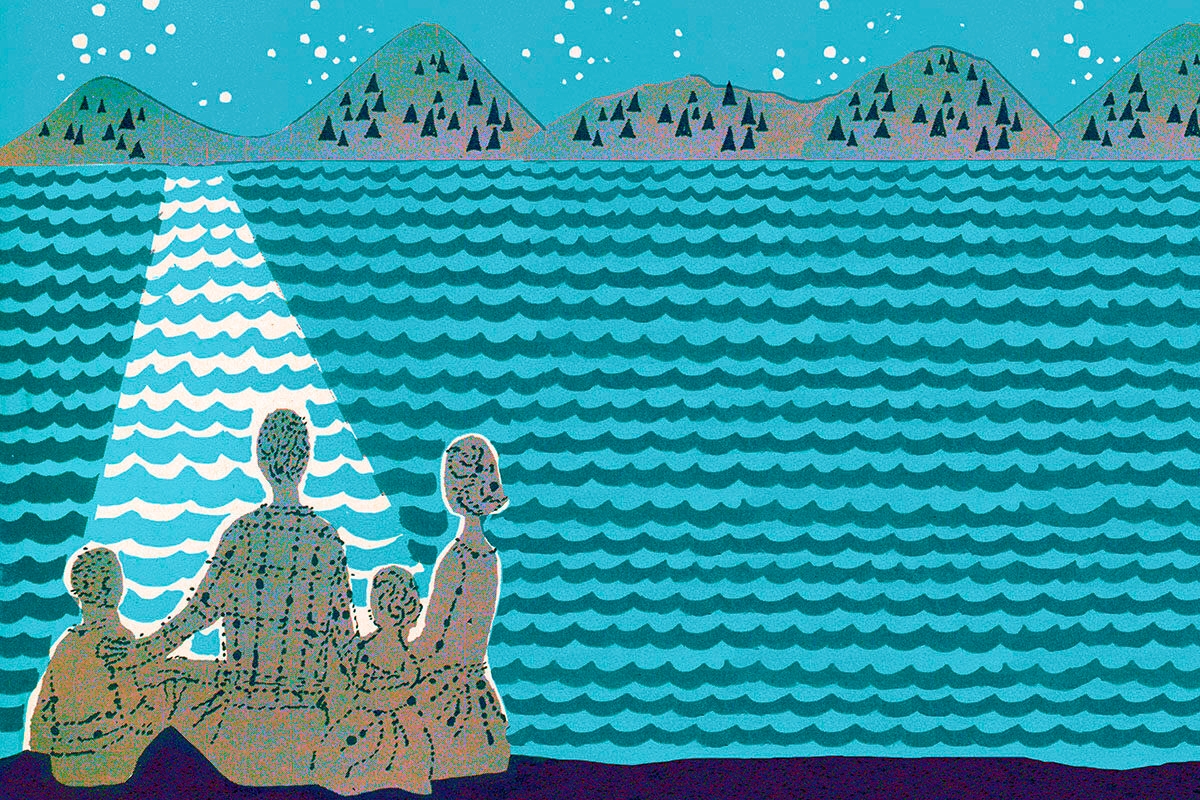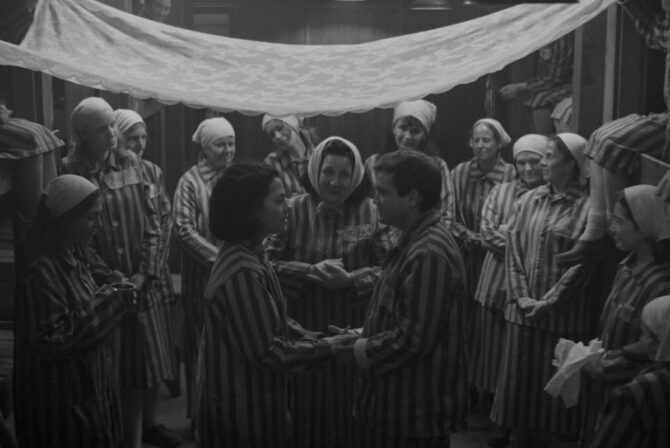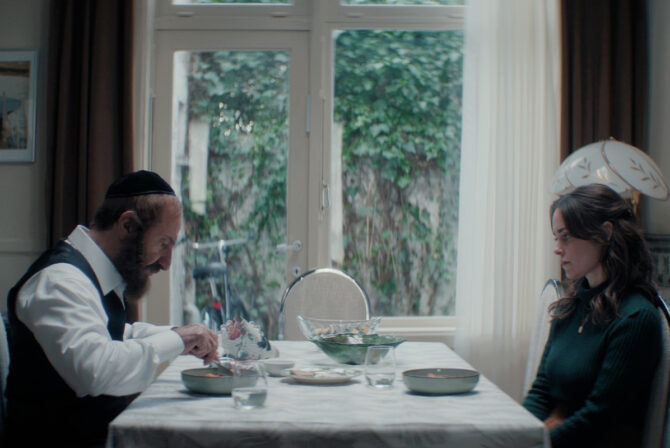As Rosh Hashanah 5781 fast approaches, I am simultaneously excited for the new year — a fresh start, a chance for teshuvah (repentance), and to continue growing closer to being the person I want to be — and losing my mind over all of the things I still have left to prepare. Holiday dinner menu, anyone?
In the weeks leading up to Rosh Hashanah, it is easy for me to get overwhelmed with — actually, lost completely in — planning the “perfect” day. I live with Obsessive Compulsive Disorder so I’m not being hyperbolic. Enthusiastic plans for apples and honey-themed crafts and elaborate meals can (and do) quickly spiral into crushing anxiety when it becomes clear that perfection will not be achieved. Keeping it real, perfection cannot be achieved.
In this way, my brain sets me up for failure each year. I use coping skills like managing my expectations, limiting my to-do list, positive self-talk, and giving myself permission to let things go in order to make it through the holiday season. Enter my favorite Rosh Hashanah ritual: tashlich, the symbolic casting off of sins.
During this ritual — which typically takes place on the first day of Rosh Hashanah, but can take place anytime during the holiday season — bread (or pebbles or other eco-friendly options) is physically thrown into a body of water, helping us to let go of things from the past year for the betterment of our mental and emotional well-being. I find it soothing to visualize my failures (real or perceived) being cast away while allowing myself to acknowledge that I missed the mark.
Interestingly, the annual ritual of tashlich is nearly identical for me each year. I let go of the times I lost my temper with my kids, and state my intention to be more present or spend more one-on-one time with them, or whatever parenting goal I’m not meeting. Although my goals are always similar, I also try to recognize that while I may have “failed” some, I succeeded some, too. In this way, not only do I release the bad, but I also remember that I did well.
I love tashlich. I need tashlich. And this year, it’s become apparent that my 7-year-old needs tashlich, too.
Unfortunately, I can add “helping my daughter manage her crushing anxiety” to the list of ways I missed the mark this year. Amidst the coronavirus pandemic, months of social isolation, and going back to school in a masked, gloved, face, and desk-shielded environment straight out of a dystopian novel, my spouse and I have made survival the number-one priority for our family. Every day, we’re just pushing to get through the day — and then the next day, and the day after that, and so on.
After six months of sheltering in place, we are only just beginning to return to a version of normal. The months of isolation have taken a visible toll on our family: Everyone in our house is in some form of therapy, except the toddler and the cats. Still, it wasn’t until this past week that I realized just how overwhelming this experience has been for my daughter.
Now in second grade, she was first diagnosed with anxiety in kindergarten. We started her on medication, which helped, and began looking for a therapist. Last year, in the middle of first grade, we found a counselor who was a great fit for her, and we started working on coping skills. But then, one month later, Covid-19 shut down the country.
Spring and summer brought virtual therapy and almost total isolation at home. In the last few weeks, she’s resumed office visits with her therapist (with masks and social distancing). I felt good about the progress we were making. I thought I was on top of her anxiety, and everything and everyone was handled — until I got the email from her teacher during the second week of school.
Apparently, my daughter was having some small difficulties. She gets easily overwhelmed, and when she gets frustrated, she melts down. According to her teacher, her behavior was disrupting her classmates’ learning.
I took extensive notes during a conference with her teacher. At her next therapy appointment, I resolved that we were going to handle this. What exactly is triggering her meltdowns? What are some strategies we can use to help her feel less pressured while we work on this? How can we help her succeed in this moment? Everything will be fine, I told myself. I’m on top of things!
And then I got the phone call.
Just days after the conference, however, my sweet, baby girl had an anxiety attack at school. She hid under her desk, refusing to come out — during lunch, of all things. When I spoke to her on the phone she told me she was too scared to come out, and she began to cry. I tried to find out what happened to scare her, but she didn’t know. She was just scared — scared, crying, and hiding under her desk. My heart sank. I picked her up from school immediately.
I knew exactly how she felt — and it’s a terrifying feeling. When you have anxiety, one moment, everything is fine. The next, something has happened and you’re afraid and you don’t know why. Everything is scary. Maybe you can’t breathe, maybe your heart is racing. Maybe you’re crying under your desk and just can’t stop. Whatever the cause, and however it manifests, anxiety and anxiety attacks are horrifying experiences. I used to think that nothing was worse for me than a full-blown panic attack. Now I know that watching my child have one and being unable to help her is so much worse.
We are working through these new issues with her counselor, her pediatrician, and a team of dedicated educators that we’re blessed to have in our lives. Yet, I’ve still wondered what else I can do to help my daughter. Then I thought: tashlich.
Perhaps this ritual will help my daughter as much as it helps me. If she can find a way to take all of these big feelings she doesn’t understand — the fear of the unknown, the times she didn’t do so well in math, and so on — and if she can take all of the small things, and maybe some of the big things, and just cast them into the water, maybe it will help her cope with our new normal, too.
We currently have plans to have a small, outdoor gathering with trusted friends for tashlich on the second day of Rosh Hashanah. We’ll have an abbreviated service led by one of the other parents, and I will be reading a story about letting go of a small mistake that has grown into something larger in a child’s mind. We’ll take our pebbles to a lake and attempt to throw away the times we lost our patience, the times we were afraid, and the times we weren’t at our best.
I hope it will help her let go of even a little of the worry on her small shoulders. I hope it will allow her to have a sweet new year, and to enjoy the elaborate meal I have yet to plan. Hopefully I’ll get a menu together before “elaborate Rosh Hashanah dinner” becomes another pebble I need to toss.
Header Image by CSA Images/ Getty Images








